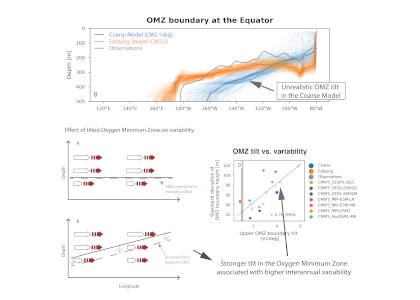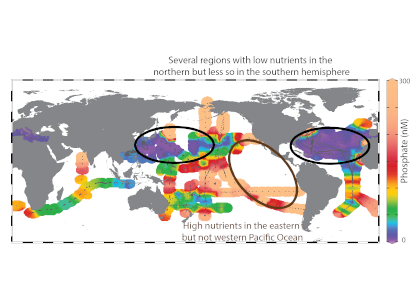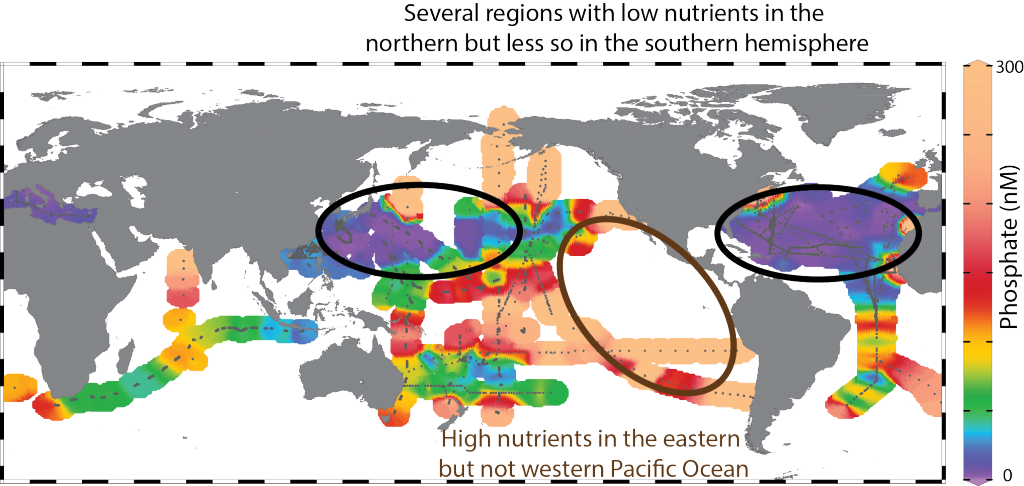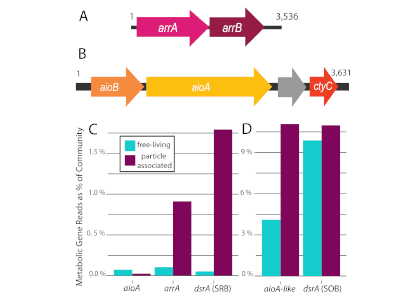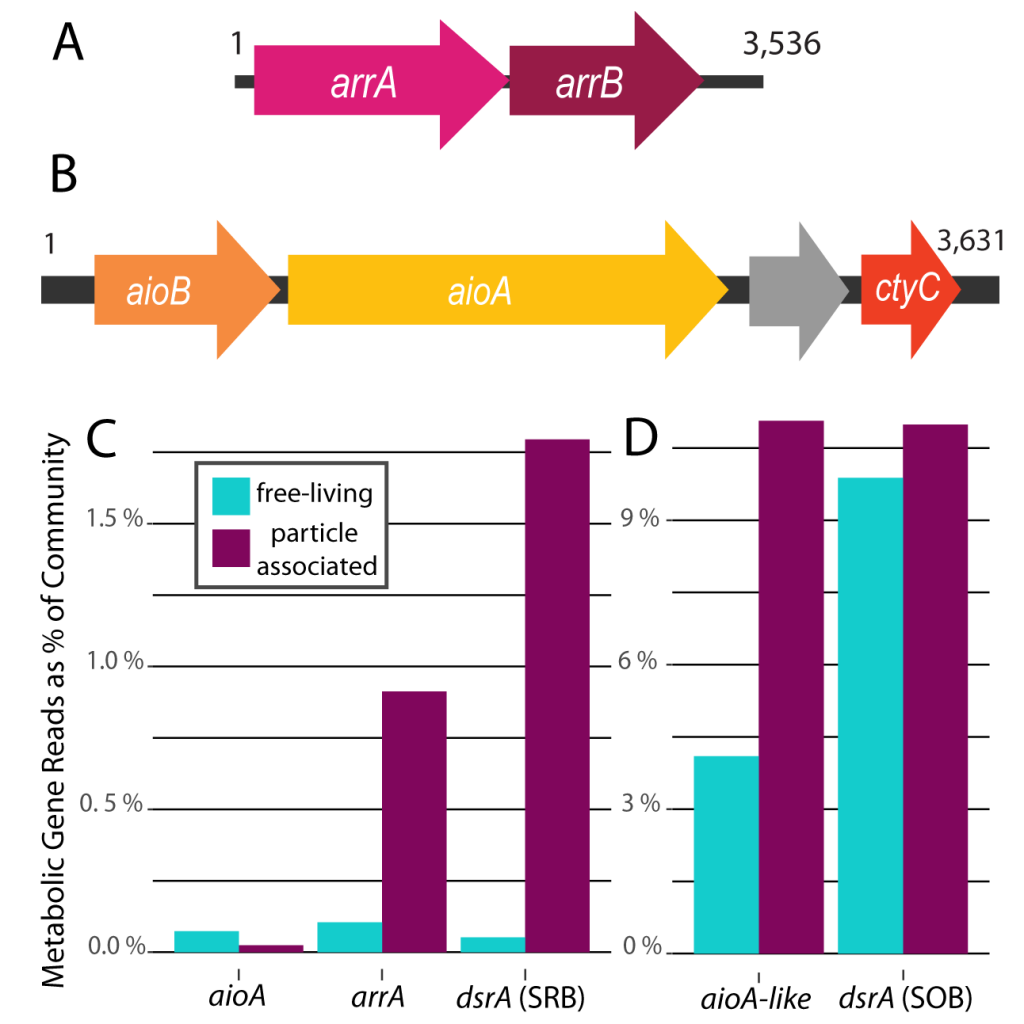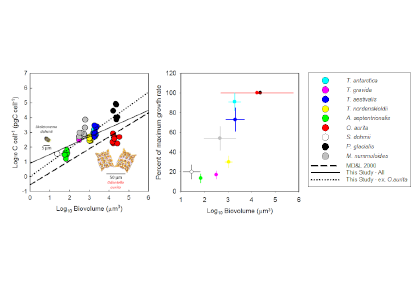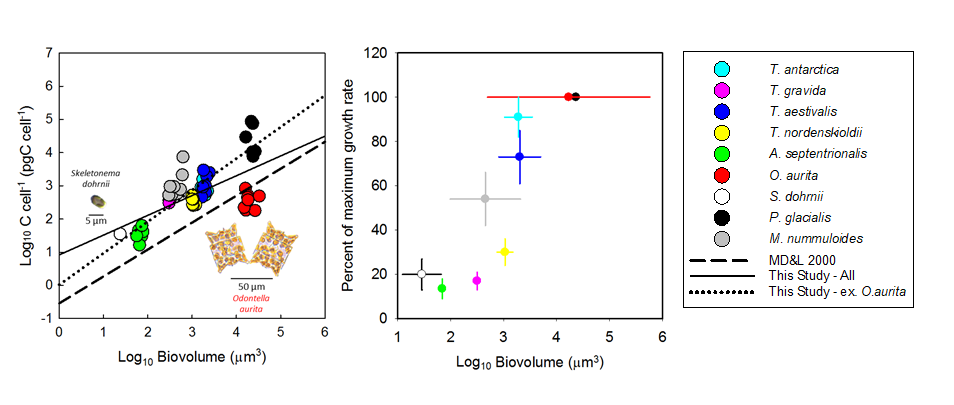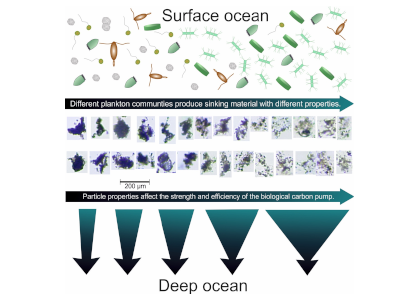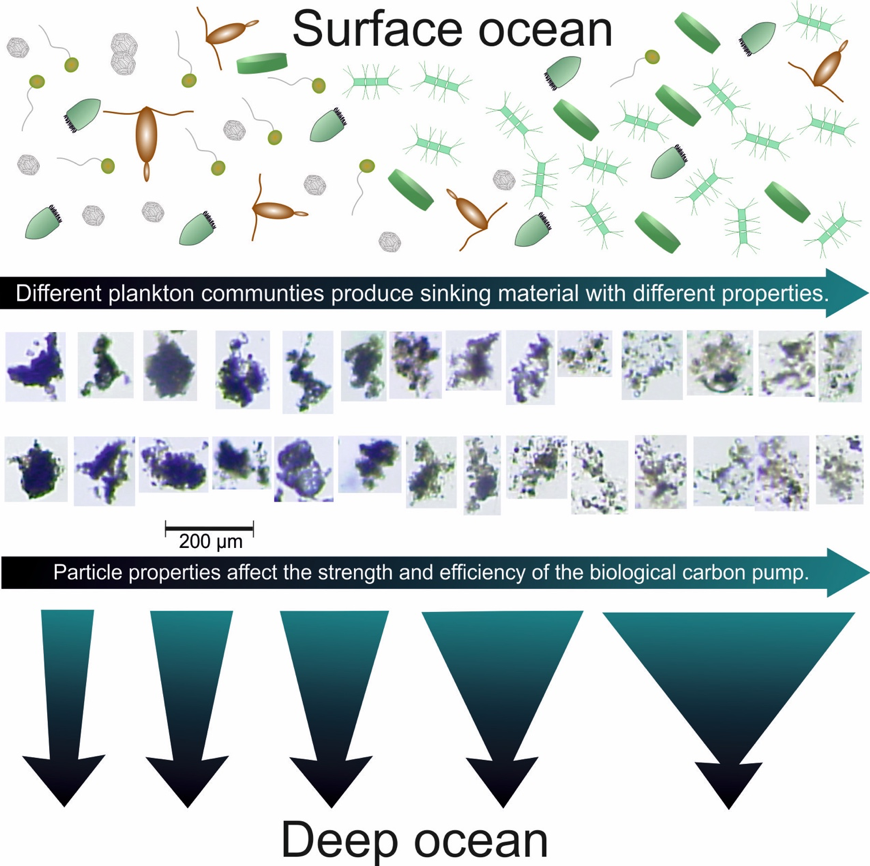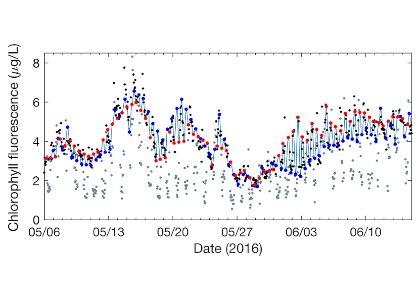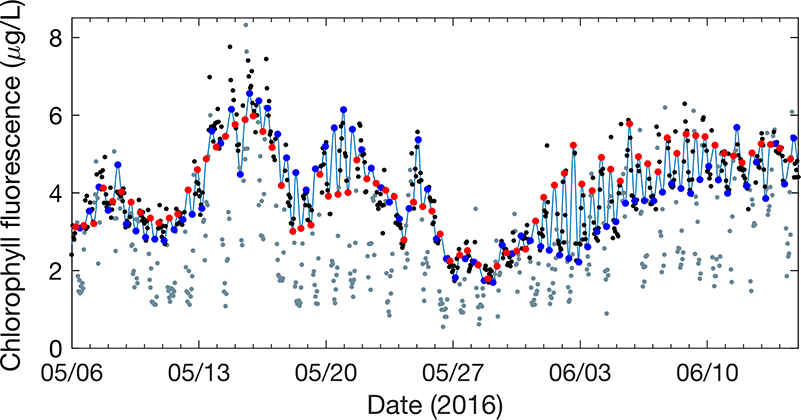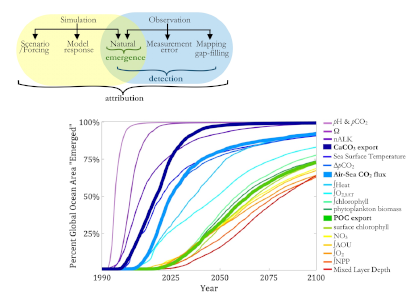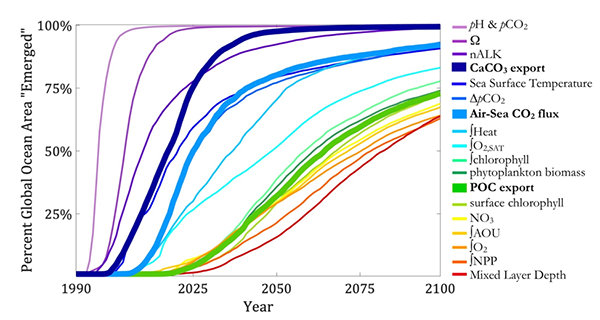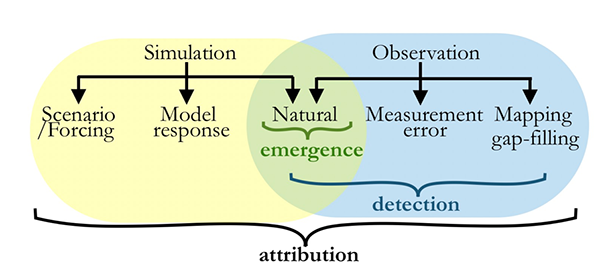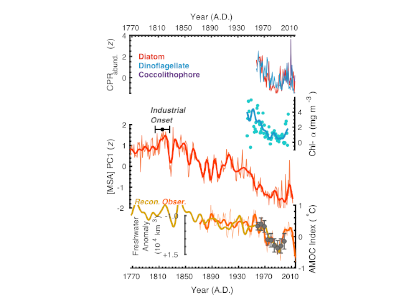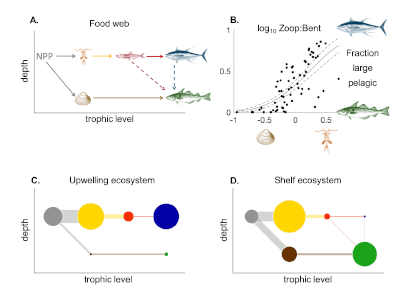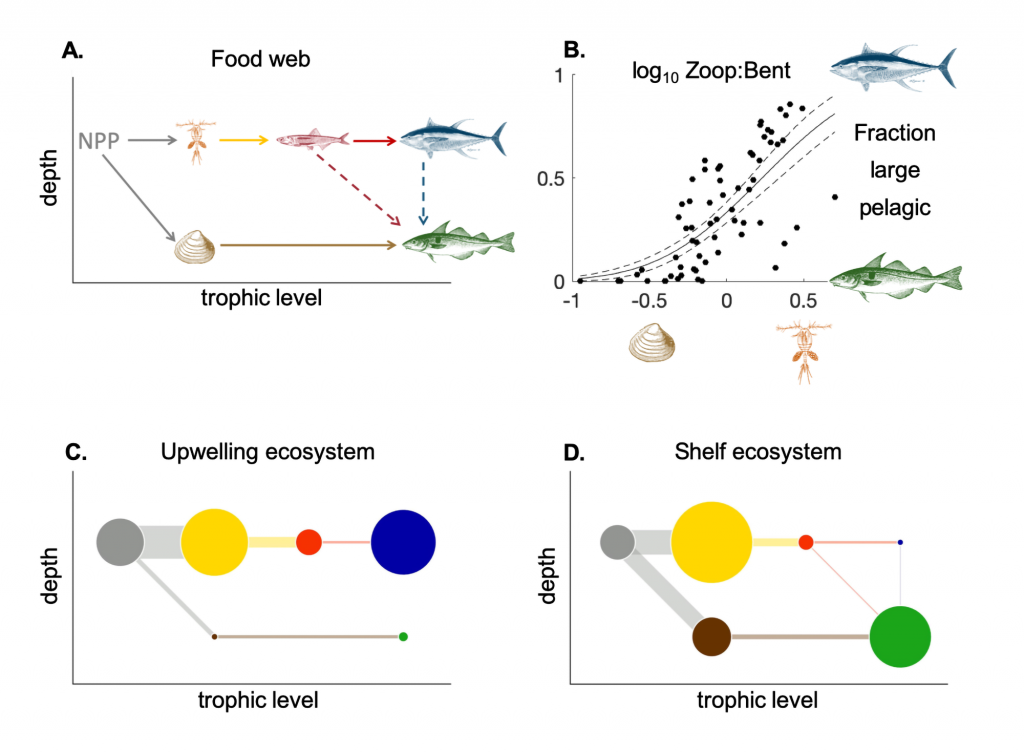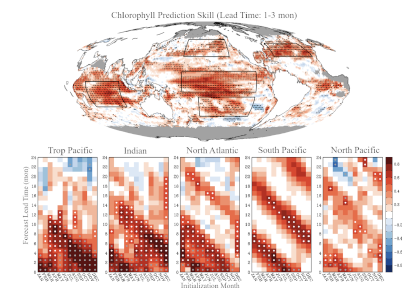While the ocean as a whole is losing oxygen due to warming, oxygen minimum zones (OMZs) are maintained by a delicate balance of biological and physical processes; it is unclear how each one of them is going to evolve in the future. Changes to OMZs could affect the global uptake of carbon, the generation of greenhouse gases, and interactions among marine life. Current generation coarse-resolution (~1°) climate models compromise the ability to simulate low-oxygen waters and their response to climate change in the future because they fail to reproduce a major ocean current, the Equatorial Undercurrent (EUC). These shortcomings lead to an overly tilted upper oxygen minimum zone (OMZ) (Figure 1), thus exaggerating sensitivity to circulation changes and overwhelming other key processes like diffusion and biology. The EUC also plays a vital role in feeding the eastern Pacific upwelling region, connecting it to global climate variability.
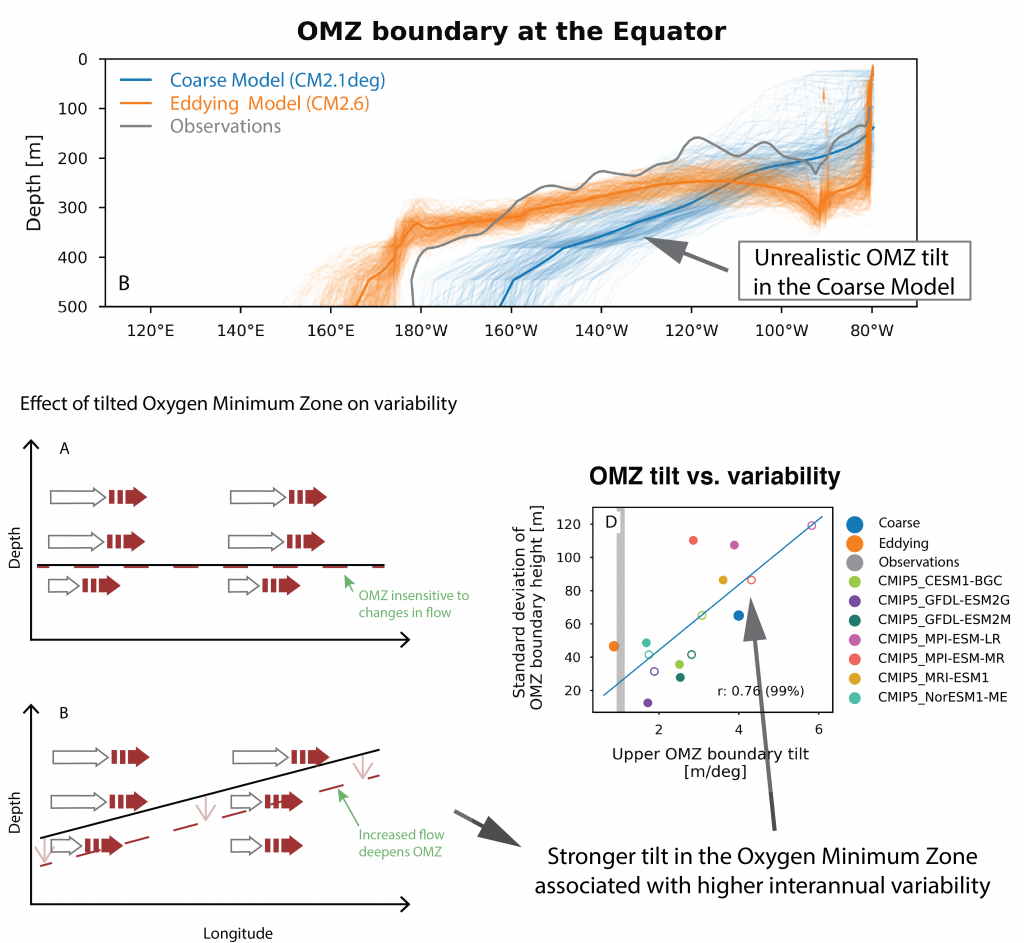
Figure: Top: The boundary of the Oxygen Minimum Zone (OMZ) along the Equator is unrealistically tilted for current generation (coarse resolution) climate models, and improves with increased horizontal resolution. The tilt is due to a bad representation of the Equatorial Undercurrent in the coarse model, also seen in other coarse models. The exaggerated tilt of the OMZ boundary at the Equator leads to increased inter-annual variability of the depth of the upper OMZ boundary, via changes in the zonal flow (left). This phenomenon is found in most CMIP5 models (right) and could be responsible for the current inability to predict the change in OMZ extent for the next century.
A recent high‐resolution climate model study in Geophysical Research Letters significantly improved the representation of both the EUC and OMZ, suggesting that the EUC is a key player in OMZ variability. This study emphasizes the importance of improving transport processes in global circulation models to better simulate oxygen distribution and predict future OMZ extent. The results of this study imply that the fundamental dynamics maintaining this key ocean current could be categorically misrepresented in the current generation of climate models, potentially influencing the ability to predict future climate variability and trends.
Authors:
Julius J.M. Busecke (Princeton University)
Laure Resplandy (Princeton University)
John P. Dunne (NOAA/GFDL)

